-
Color Physics @Hampshire, Day 18
On Day 18 we
- Discussed the pieces students drew/painted over the course of the last three days
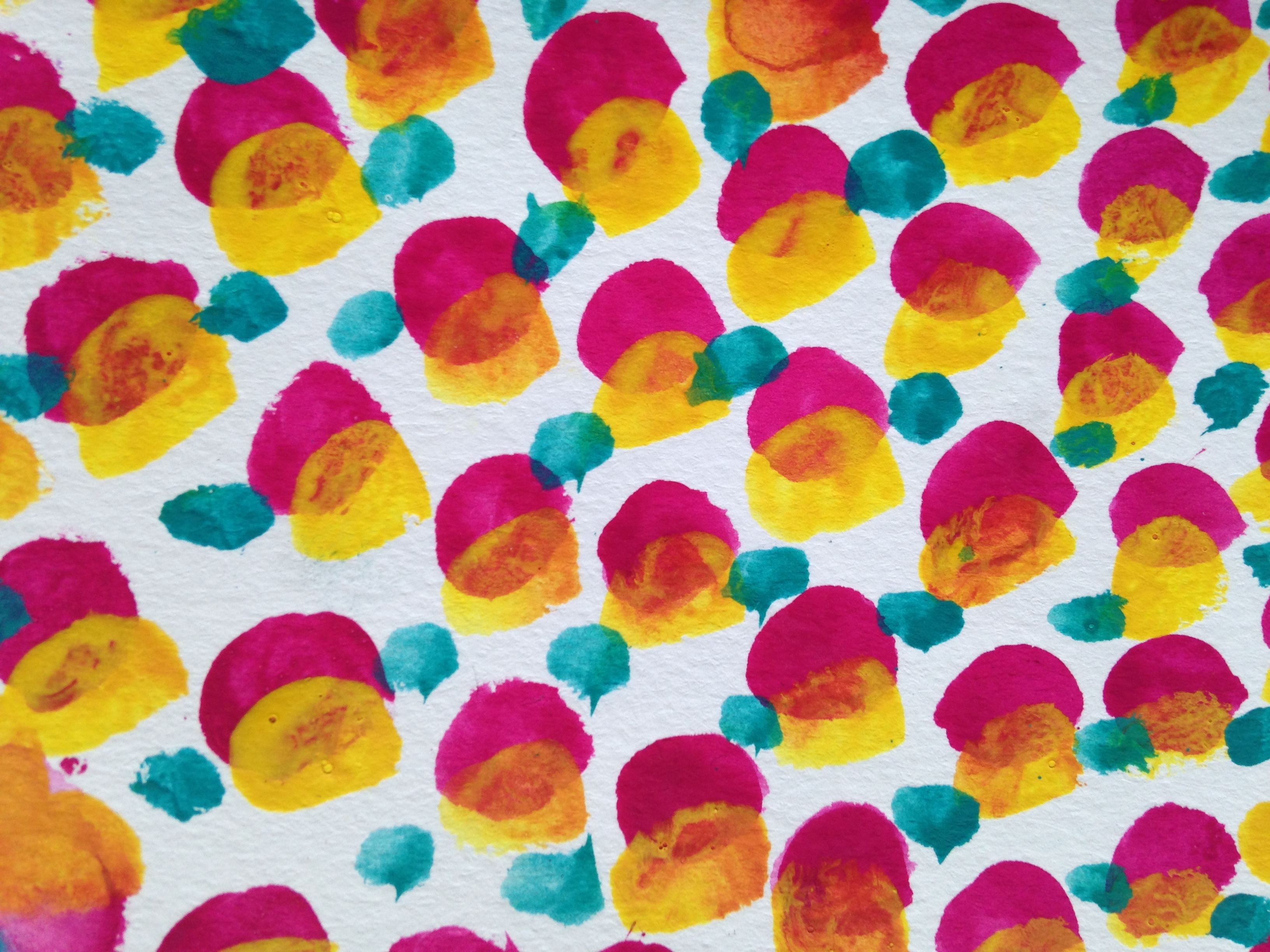 A halftone exercise with watercolors by Madeleine Perreault.
A halftone exercise with watercolors by Madeleine Perreault.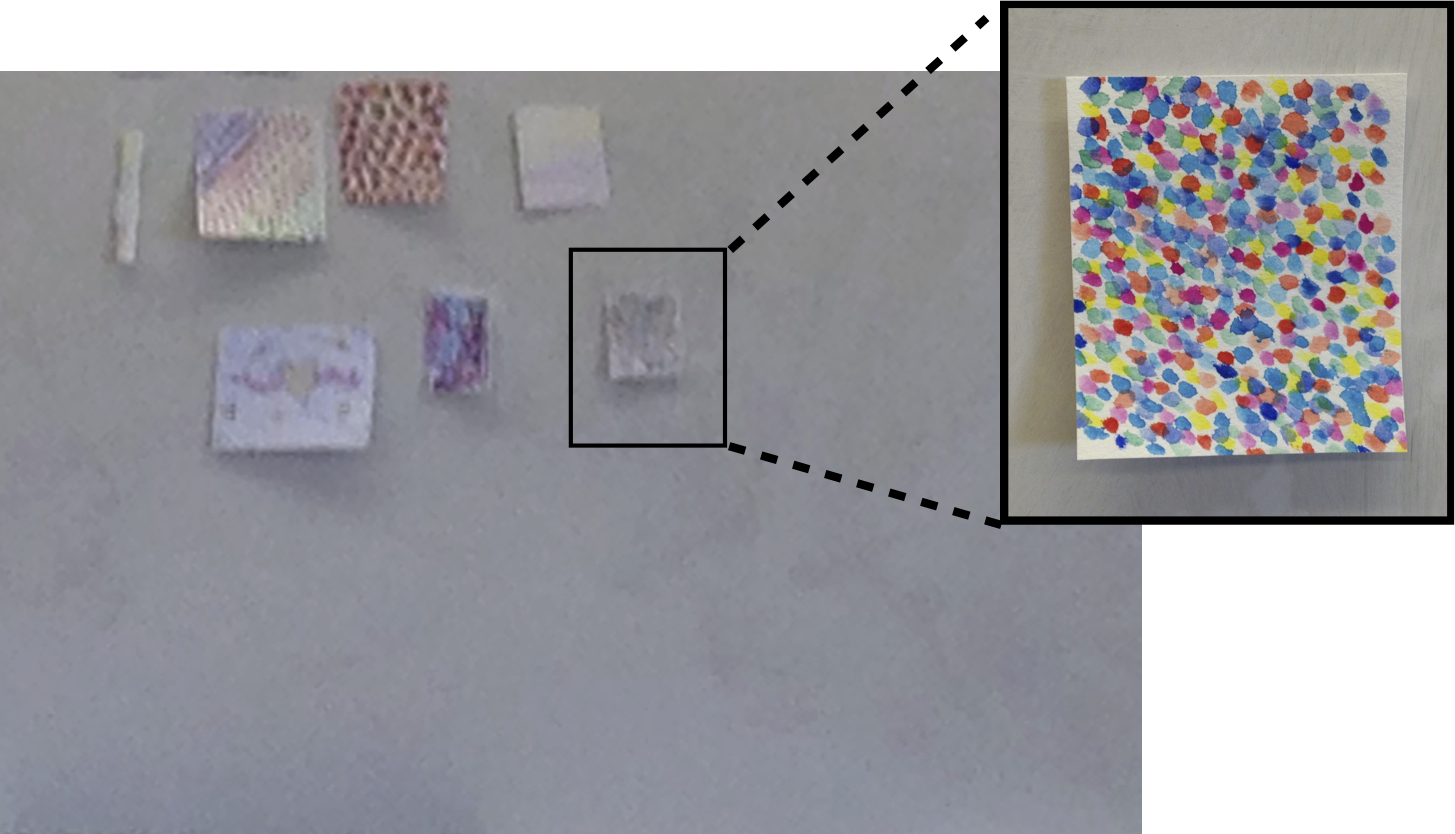
The effects of additive mixing. Piece by Sara Young, looks grey from far away, but up close it is a colorful mixture. - Practiced how to determine the spectral composition of reflected light from the spectral composition of incident light and the reflectance curves of the surfaces.
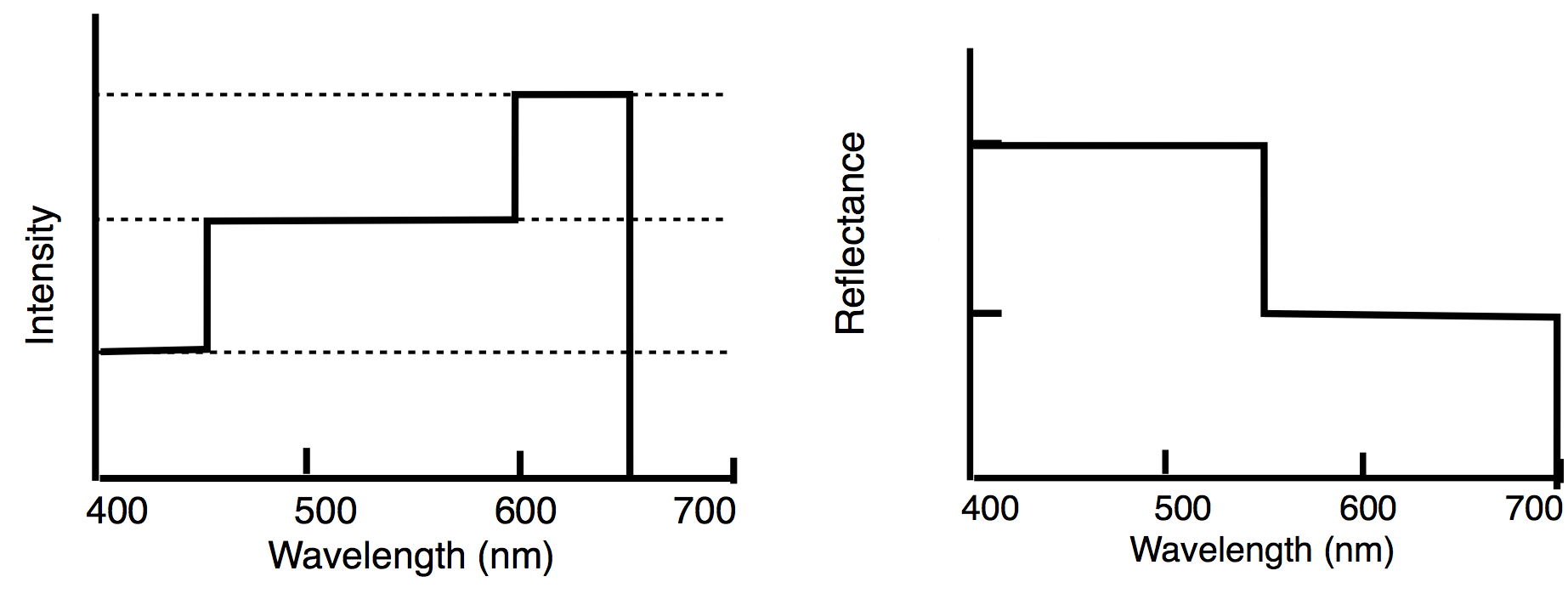
Given date for a sample problem for which students used the incident intensity distribution and the reflectance curve to find the intensity distribution of the reflected light. -
Color Physics @Hampshire, Days 15-17
Days 15, 16, and 17 were spent on hands-on activities in which students investigated subtractive mixing by reflection, and explored the use of additive and subtractive mixing in print and painting. The activities included:
- Creating partitive mixtures in the pointillist style
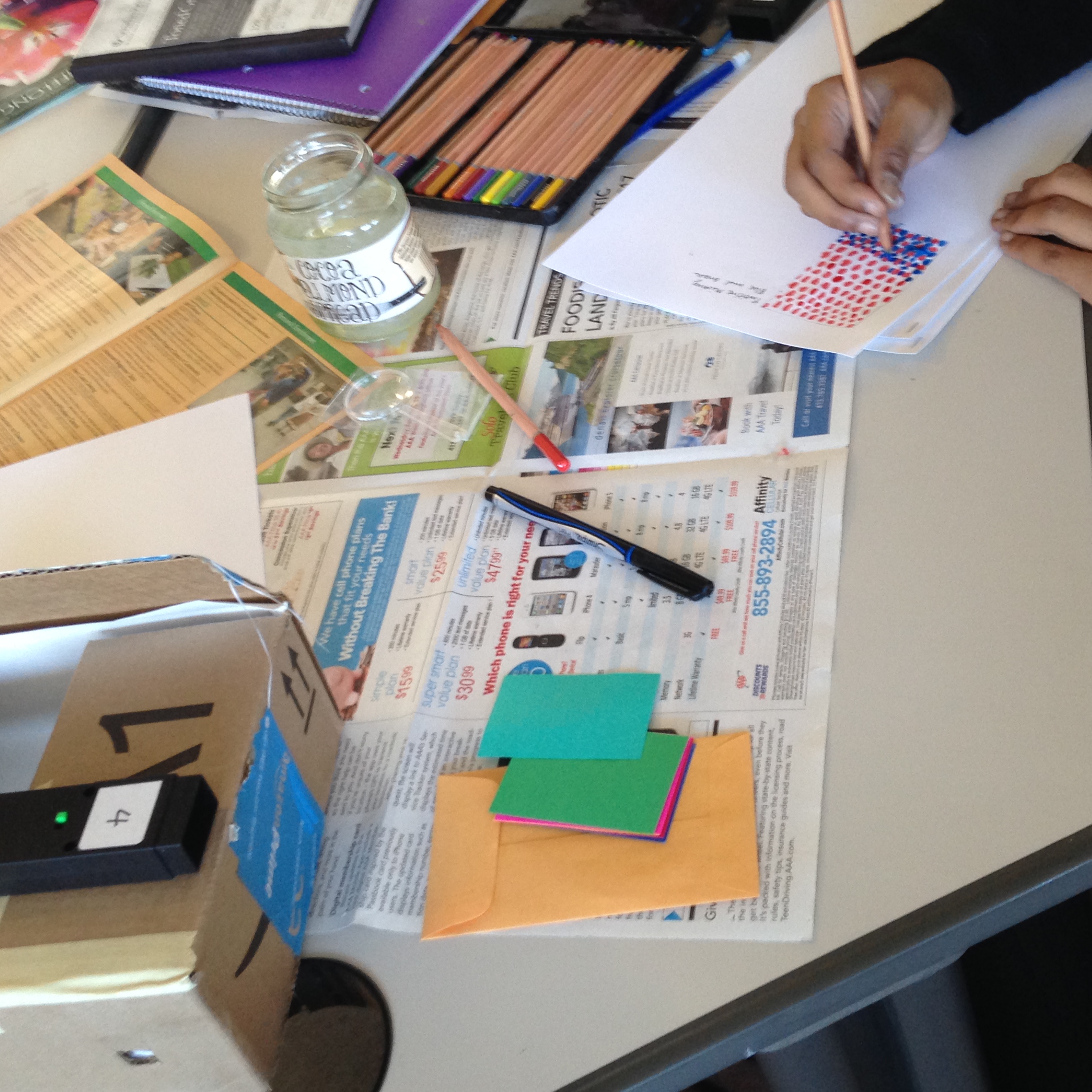
- Investigating and replicating the use of halftone in print
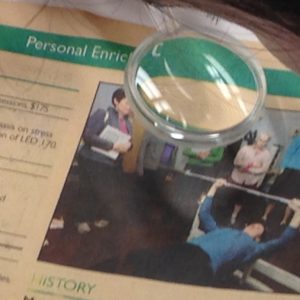
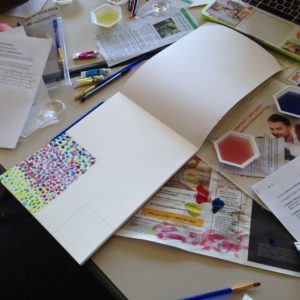
Students used magnifying glasses to look at newsprint and determined how the CMYK system is used for printing. Then the made their own halftone designs.
- Investigating subtractive mixing by reflection.
 This portion involved three different activities:
This portion involved three different activities:
- In the first, students placed pieces of paper of various colors in a light-tight box, illuminated them by one of the lights we have (red, green, or blue), and recorded their observations. The papers we used were to an OK approximation, red, blue, green, cyan, magenta, and yellow.
- In the second activity, students used their observations from the first to predict what colors the same pieces of paper would appear to have when illuminated by white light, but viewed through filters of different colors. They then tested their predictions and commented on any discrepancies.
- Finally, using what they learned from the first two activities, students devised a method by which they can determine how “pure” the cyan, magenta, and yellow pigments in their watercolor sets were.
- Holography. Thanks to Prof. Wirth, each student got to make a hologram using reflection holography.
made holograms today in my physics of color class ? @physartphil pic.twitter.com/9Hu4I7clzY
— sara (@saraannyong) April 6, 2017

A student-made hologram of a thread spool
- Creating partitive mixtures in the pointillist style
-
Color Physics @Hampshire, Day 14
On day 14, in preparation for an activity of making holograms, Prof. Wirth gave a mini lecture on interference of light, its use in early color photography, and its application to holography.
After that, we continued our exploration of subtractive mixing with filters. Students worked through a worksheet in which they had to answer quantitative and qualitative questions. Among other things, students
- Made predictions about the intensity distribution of transmitted light given a wide-spectrum white light incident on ideal filters with a variety of transmittance curves, and compared them with observations.
- Made predictions about the intensity distribution of transmitted light when colored light is incident on ideal filters with a variety of transmittance curves, and compared them with observations.
- Sketched the transmittance curves for a combination filters.
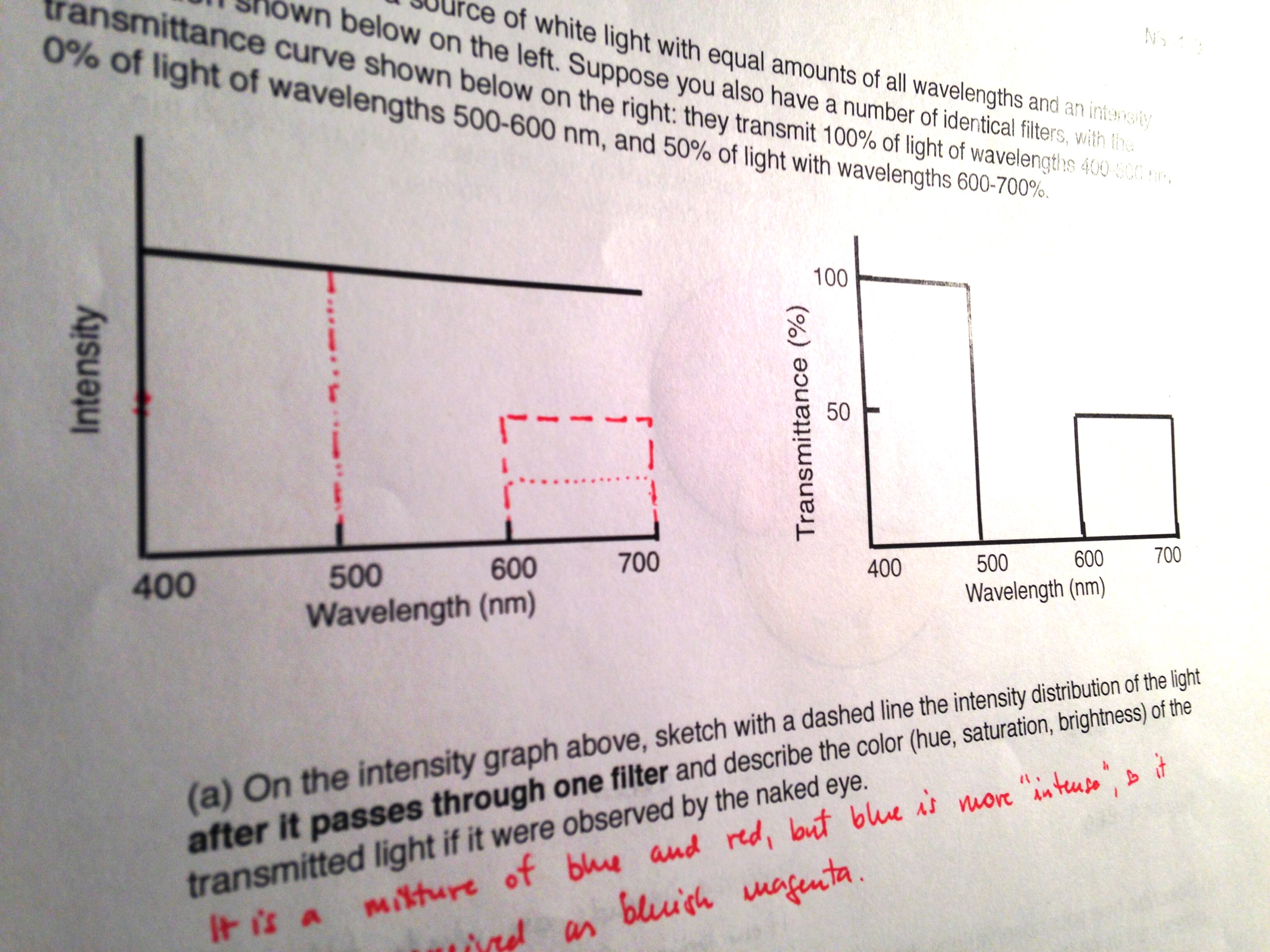
We worked on transmittance curves for multiple filters. - Looked at the real transmittance curves of our filters to understand why not all of the light is blocked by overlapping cyan, magenta, and yellow filters.
At the end, we went over all of the answers as a class.
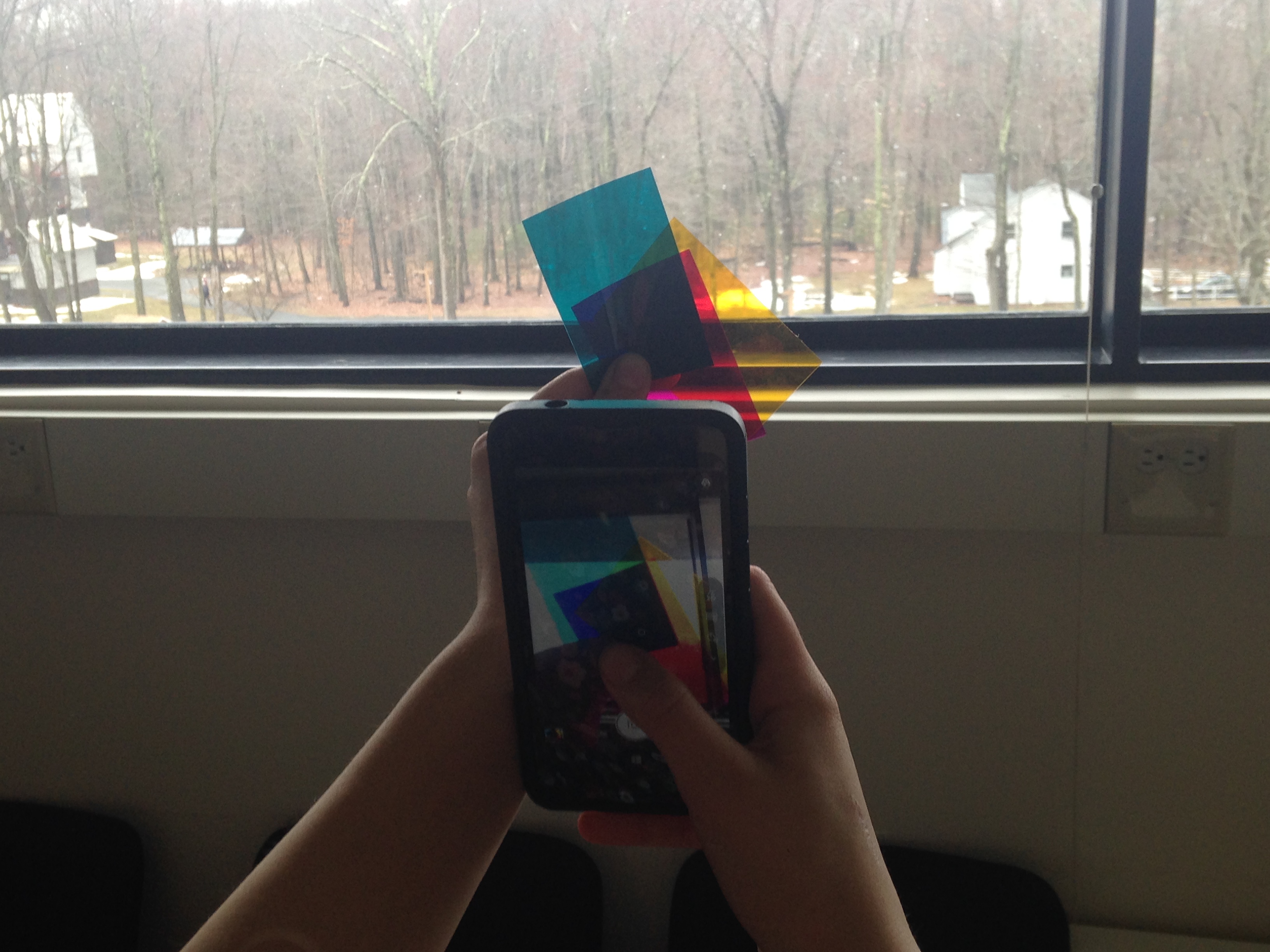
Subtractive mixing with filters. Materials:
-
Color Physics @Hampshire, Day 12
On day 12 we continued to talk about subtractive mixing with filters. We covered the following topics
- Subtractive mixing with filters
- Transmittance curves
- Ideal vs real fiters
- Cyan, Magenta, and Yellow (CMY) color system
- We also touched on color photography (and in particular the work of the physicist J. C. Maxwell) the early color films, including the two-color system and the three-color Technicolor system. We saw a nice example of early film created using the two-color system, for which the camera had rapidly changing red and green filters.
Other resources:
- An informal on-line resource on the use of subtractive color mixing in early film.
- Malcolm S Longair, “Maxwell and the science of color.” Phil. Trans. R. Soc. A 2008 366 1685-1696; DOI: 10.1098/rsta.2007.2178..Published 28 May 2008.